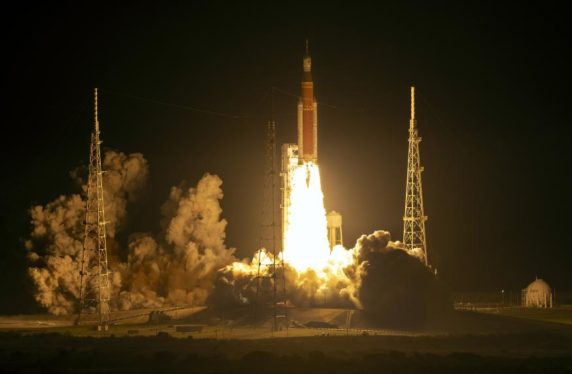NASA's Space Launch System (SLS) rocket designed to take astronauts to the moon is over budget and far behind it's original schedule, according to a scathing new audit from NASA's Inspector General. Furthermore, the report foresees "additional cost and schedule increases" that could potentially jeopardize the entire Artemis mission if problems aren't handled.
NASA's spending on the Artemis Moon Program is expected to reach $93 billion by 2025, including $23.8 billion already spent on the SLS system through 2022. That sum represents "$6 billion in cost increases and over six years in schedule delays above NASA’s original projections," the report states.
The SLS, which finally launched for the first time in November 2022, uses four RS-25 engines per launch, including 16 salvaged from retired Space Shuttles. Once those run out (all engines on SLS are expendable), NASA will switch to RS-25E engines being built by Aerojet Rocketdyne, which are supposed to be 30 percent cheaper and 11 percent more powerful. It also uses solid rocket boosters provided by Northrop Grumman.
The older technology isn't helping with the budget as NASA expected, though. "These increases are caused by interrelated issues such as assumptions that the use of heritage technologies from the Space Shuttle and Constellation Programs were expected to result in significant cost and schedule savings compared to developing new systems for the SLS," the audit states. "However, the complexity of developing, updating, and integrating new systems along with heritage components proved to be much greater than anticipated."
For instance, only 5 of the 16 engine adaptations have been completed, and scope and cost increases have hit the booster contract as well. The latter has been the biggest issue, increasing from $2.5 billion to $4.4 billion since Artemis was announced, and delaying the schedule by five years.
The Inspector General also blames the use of "cost-plus" contracts that allow suppliers to inflate budgets more easily, instead of fixed-priced contracts. The report recommends that upcoming work be shifted to a fixed-price regime and that procurement issues be resolved, among others. NASA management has agreed to all eight recommendations.
The Artemis moon mission project was based on the Constellation program, originally launched in 2005 with the goal of returning to the moon by 2020 and eventually, Mars. Cancellation of that project by the Obama administration was met with widespread criticism, largely because the program guaranteed jobs around the US.
However, the NASA Authorization Act of 2010, introduced the same year, mandated construction of the SLS and requiring the repurposing of existing technology, contracts and workforce from Constellation. It also required partnerships with private space companies. SpaceX, for one, is developing its own Starship rocket system, also capable of carrying astronauts to the Moon and Mars. However, Starship exploded on its first orbital launch mission, and may not fly again soon due to issues with the self-destruct command and the considerable damage it did to local ecosystems.
This article originally appeared on Engadget at https://www.engadget.com/nasas-sls-rocket-is-6-billion-over-budget-and-six-years-behind-schedule-091432515.html?src=rss

